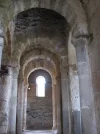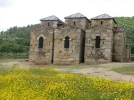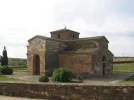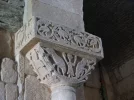Kiwi-family
{Rachael, the Mama of the family}
- Time of past OR future Camino
- walking every day for the rest of my life
We are thinking of MAYBE walking the Via de la Plata with a special eye to architecture (and of course history). My two youngest sons (13 and 14yo) have both expressed a wish to become architects and are starting to work on a big project in that area. Having done a bit of research myself, it occurred to me that a walk along this route could show them everything from Roman ruins in Merida (and we have been studying Ancient Greece and Rome this year so these would be wonderful to see) to the amazingly modern bus station in Casar de Caceres (and the bull ring!). Obviously Seville, Salamanca and Zamora have their own treasures - not to mention Santiago itself and Madrid that we would fly in and out from. Next year our history studies will focus on the medieval world/renaissance/reformation - so Europe provides a much better field trip than NZ can manage for that time period;-)
Can anyone highlight any other important spots on this route in terms of architecture.
I'm guessing a guide will be useful, but Mr Google will help us too.
Could you recommend a good book or three (not necessarily "guide") that we could read before going? I'm not an architecture buff, but have enjoyed getting to know more as I have walked various caminos! I didn't used to know what Romanesque, gothic or aqueduct even meant!!!!!
The other question would be: do you think there is a better route for what we would like to "see"?
Can anyone highlight any other important spots on this route in terms of architecture.
I'm guessing a guide will be useful, but Mr Google will help us too.
Could you recommend a good book or three (not necessarily "guide") that we could read before going? I'm not an architecture buff, but have enjoyed getting to know more as I have walked various caminos! I didn't used to know what Romanesque, gothic or aqueduct even meant!!!!!
The other question would be: do you think there is a better route for what we would like to "see"?




















